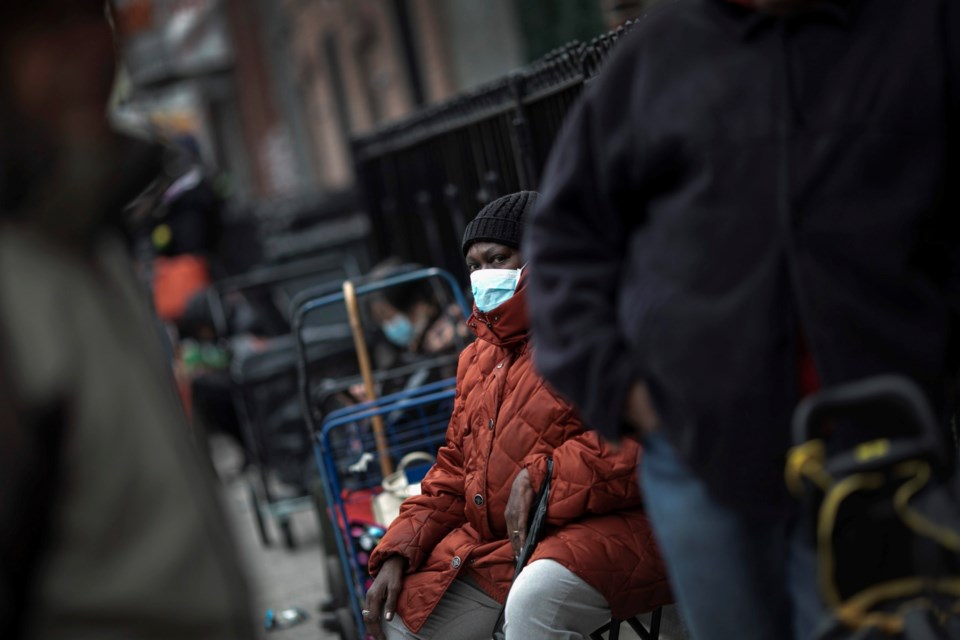For more than a week, Elaine Peoples, who cooked for a now-shuttered day care
“Volunteering is vital," said Peoples, who herself is experiencing financial strain. “Everything I get goes to bills. My budget is stretched to the limit. There is no extra.”
These days low-income families still need food. Homeless people still need beds. And those puppies in the animal shelter still need walks.
For decades, American nonprofits have relied on a cadre of volunteers who — quite suddenly — aren’t able to show up. With millions staying home during the pandemic, charities that help the country’s neediest are finding themselves in need.
“This is a time when we do need everybody pulling together to help us out,” said Leslie Bacho, CEO of Second Harvest of Silicon Valley, one of the nation's largest food banks.
Many Americans have now been ordered to stay inside their homes, although there are exceptions for people providing essential services, and, in orders reviewed by The Associated Press, that includes volunteering at food banks.
Nonetheless, Bacho said half of the bank's volunteers — the equivalent of 107 full-time staffers — aren’t showing up. This means as more people need food, there's less ability to get it to them.
“Volunteers are needed the most in times of crisis,” said Dr. Grover Gilmore, dean of Case Western’s school of social sciences. “This is simply another example, and an extreme example, of everyone needing to help as best they can.”
For most people, the new coronavirus causes only mild or moderate symptoms. But for some older adults and people with existing health problems, it can cause more severe illness.
One out of four Americans volunteers, performing an estimated 8 billion hours a year of service. The most common work? Collecting, preparing, distributing or serving food, according to the Bureau of Labor Statistics.
Kathryn Strickland, chief network officer at Feeding America, the nation’s largest organization of food banks, with some 200, said the group has seen a “sharp decline” in volunteers across the country, and is asking for new volunteers and scrambling to hire additional staff for pay.
Sheila Williams usually has 25 volunteers to feed about 100 people a day at St. Stephen Outreach in Brooklyn.
Now she's down to just 10, including Peoples, with lines out the door, more people than she’s ever seen.
“Folks that don’t normally come are coming,” she said, after dishing out countless plates of franks, rice, beans and fruit. “They’ve lost their job, there’s nothing in the supermarket.”
Jose Rosa, 63, comes to the soup kitchen once a week. He lives in a homeless shelter and says he doesn't get enough to eat there.
“It keeps me healthy, it keeps food in my stomach," he said of his trips to St. Stephen. Without it, he said, “I'd go hungry."
In Silicon Valley, some 10,000 homeless people are in a terribly vulnerable situation, said Jennifer Loving, CEO of Destination:Home, a public-private partnership that addresses homelessness. Public health experts have warned that people living in tents or under tarps have less access to soap and water and are more exposed to disease and violence.
“Further, many others, like intake and shelter workers and food delivery workers are some of our lowest paid residents and are now called to the front lines," she said. “We must do everything we can to protect these heroes from further economic and health peril."
Food banks are also largely
In Seattle, the initial epicenter of the U.S. outbreak, Food Lifeline is struggling. It relies on roughly 18,000 volunteers every year to collect and sort food donations, package boxes and deliver goods. The organization is now telling all but a small core group of volunteers to stay home.
“We can’t take those food donations because we can’t sort and repack them,” Mark Coleman said. Instead, they’re buying prepackaged food that doesn't require sorting, at roughly $30 per box. All of this is happening as they expect demand for their services to double, Coleman said. Before the crisis, they packaged 72,000 boxes a month.
“It’s really tough. The stock market crash in 2008 was tough, but nothing like this,” he said.
Joe Burns, 69, is among just 20 volunteers still pitching in at Food Lifeline. For the past four years, he's come four days a week to sort apples, oranges and other fresh fruits and vegetables. That won't change, he said.
“People are getting laid off left and right and going on unemployment and very soon aren’t going to have any means for buying groceries," he said. “There's a need right now so you just gotta step up to the plate."
It's not just food banks whose volunteer workforce has dwindled.
Laura Condouris, 38, a graphic designer, continued to show up for her weekly shift at the Maryland Society for the Prevention of the Cruelty to Animals in Baltimore until it closed on Monday. But even then her work wasn't over: That night, Condouris brought a mutt named Roxie, who'd been staying at another shelter, to a new foster home.
“The volunteers who are usually there on weekdays are retirees and older people," Condouris said. "Some of the people I normally see there can and should be staying home, so I’ve got to pick up the slack.”
While the humans were hustling, Roxie, whose muzzle is white and whose left ear sags, seemed unperturbed by her move.
Martha Mendoza, Juliet Linderman And Maye-E Wong, The Associated Press



